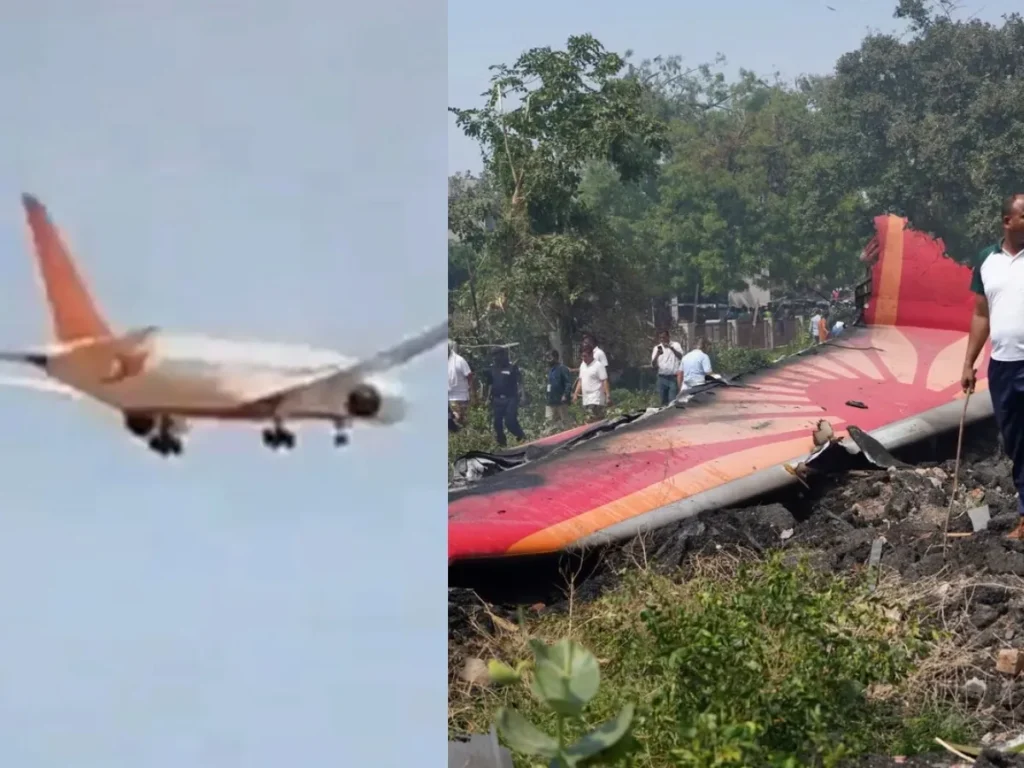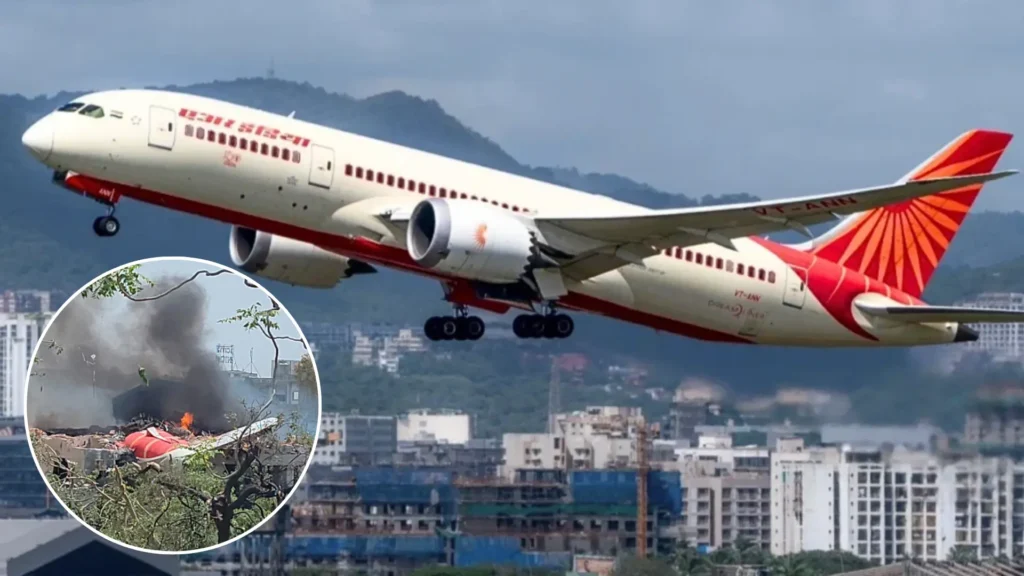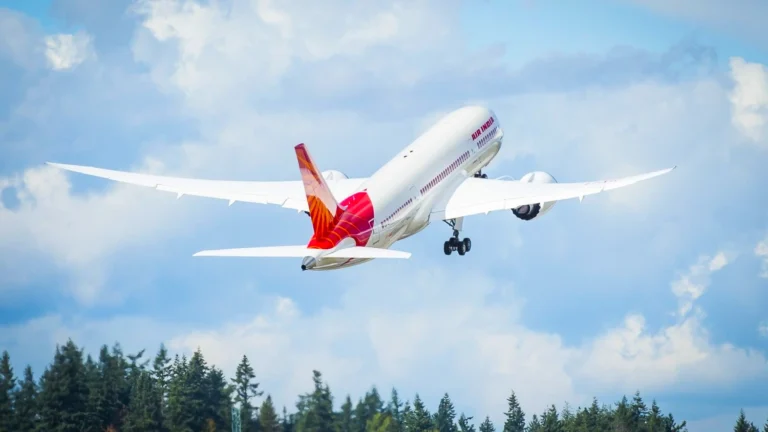NEW DELHI- Air India (AI) Flight AI-171 crashed on Thursday afternoon, June 12, 2025, marking the world’s first fatal Boeing 787 Dreamliner accident.
The aircraft departed Ahmedabad bound for London’s Gatwick airport (LGW) but plummeted barely one minute after takeoff into Meghani Nagar’s densely populated residential area.

Air India Crash
The Dreamliner had safely completed a flight from New Delhi (DEL) to Ahmedabad (AMD) just hours earlier, ruling out pre-existing mechanical issues or sabotage.
Eyewitness videos captured the aircraft’s final moments, showing the undercarriage still deployed and nose pitched upward, indicating dangerously low airspeed before impact.
Wreckage was scattered across rooftops and streets after the aircraft struck a medical student hostel.
Air Marshal Sanjeev Kapoor analysed the incident, emphasising ‘what could have been’ a desperate 50-second battle against technical failure with insufficient altitude or speed for recovery.

Technical Malfunction Analysis
Preliminary evidence, including Mayday calls and ADS-B data, indicates the aircraft lost contact at approximately 625 feet altitude.
Kapoor identified probable engine thrust failure as the primary cause, potentially triggered by bird ingestion, engine fire, mechanical shaft failure, or fuel system malfunction.
The aircraft reached a maximum altitude of 425 feet before descending at 475 feet per minute. Flight data shows the Dreamliner operated at unstick speed, the minimum velocity required for takeoff, when the emergency occurred.
Video evidence reveals the landing gear remained deployed throughout the emergency, significantly increasing drag and reducing the aircraft’s ability to maintain altitude. The nose-up attitude confirmed critically low airspeed, eliminating any possibility of returning to the airport or executing emergency manoeuvres.

Probable Emergency Response
The entire emergency sequence from peak altitude to ground impact lasted approximately 45-50 seconds.
During this brief window, the flight crew “might have attempted” multiple emergency procedures simultaneously, including engine relight attempts, emergency power activation, full throttle application, obstacle avoidance, and standard operating procedure checklists.
Kapoor emphasised that while pilots train extensively for such emergencies, the compressed timeframe prevented complete execution of all required procedures. The crew operated without adequate height or speed margins, eliminating manoeuvring options typically available during engine failures at higher altitudes.
ADS-B tracking data confirmed the aircraft’s rapid descent rate and the crew’s limited response time, highlighting the severity of the technical malfunction that occurred during the most vulnerable phase of flight.

Environmental and Operational Factors
Ahmedabad’s summer conditions presented additional challenges for the fully loaded international flight. Ground temperatures reached 45°C, affecting engine thrust margins and aircraft performance parameters.
The Dreamliner carried approximately 126 tonnes of fuel for the London route, representing maximum operational weight. While within certified limits, the heavy fuel load reduced available thrust margins for emergency recovery procedures.
Kapoor noted Ahmedabad’s significant bird activity, particularly large species like eagles and vultures that utilise thermal currents during summer afternoons.

Investigation Process
The Aircraft Accident Investigation Bureau, independent from DGCA oversight, leads the technical investigation. Recovery teams found the orange-colored flight data recorder and cockpit voice recorder, typically positioned in the aircraft’s tail section for maximum survival probability.
Video footage showed the tail section suspended from a building structure, providing investigators immediate access to critical flight data systems.
CVR and FDR analysis will require weeks or months to complete, but represent the primary source for determining exact failure sequences.
The AAIB investigation team includes technical experts, experienced pilots, engineers, and Indian Air Force personnel providing specialised guidance. Scientific analysis will examine all potential causes, including previously raised whistleblower concerns about Dreamliner production quality.

Dreamliner Safety Record
This incident marks the first fatal crash of Boeing’s 787 Dreamliner since the aircraft’s 2011 introduction. The Dreamliner’s Rolls-Royce engines maintain exceptional safety records, requiring simultaneous failure of multiple systems to create such catastrophic circumstances.
Kapoor cautioned against premature conclusions about aircraft design or manufacturing defects, emphasising the need for thorough forensic validation through black box analysis.
The investigation will determine whether any previously identified production concerns contributed to the accident sequence.
Stay tuned with us. Further, follow us on social media for the latest updates.
Join us on Telegram Group for the Latest Aviation Updates. Subsequently, follow us on Google News

